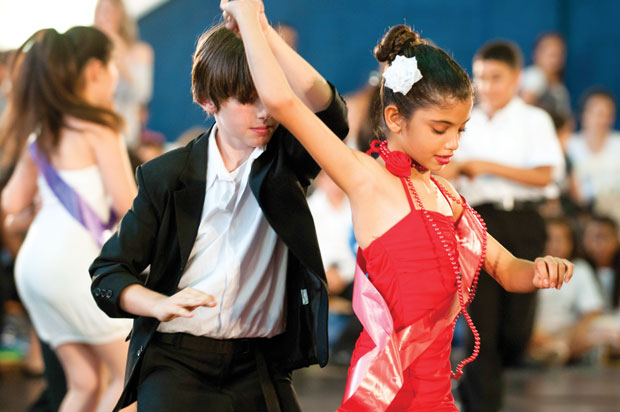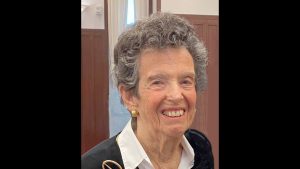‘Dancing in Jaffa’ takes steps to bridge Mideast divide
Published May 14, 2014
Several documentaries have been made about programs to build bridges between Jewish and Arab communities in Israel through music, arts or sports, but a new film, “Dancing in Jaffa,” has a special charm and a surprising level of hope for the future.
The documentary follows award-winning ballroom dancer Pierre Dulaine as he returns to Jaffa, Israel, to teach Jewish and Arab schoolchildren to dance – together. This warm-hearted film is a delight for anyone longing for a feel-good – but grounded – movie on the topic.
Much of its charm comes from the children and the white-haired, impish Dulaine. At the beginning, Dulaine says, “It is my belief that when one human being dances with another human being, something happens. You get to know that person in a way you can’t describe.”
The results of his dance class suggest he might be on to something.
Dulaine has 30 years of experience teaching children to dance in the United States. The dancer was born in Jaffa to a Palestinian mother and an Irish father, but the family left when Dulaine was 4 years old.
Much of the film is narrated by Dulaine, but we also get to know some of the children, who speak about their lives and homes as friendships develop through the classes.
The dancer tells us he isn’t political and, in fact, there is no real discussion of political or cultural differences in the film. Instead, the focus is on human connections. Although many Palestinians have left Jaffa over the years and the ones who remain have Israeli citizenship, tensions still exist, and the two groups live separate lives. At one point in the film, scuffles between the two break out around a protest march, and police step in.
“I’m asking them to dance with the enemy,” Dulaine says at one point, but he also tells a Jewish cab driver, “We’re not going to leave. You’re not going to leave. We have to find a way to get along.”
Dulaine clearly thinks dance might help build bridges and, as the film unfolds, viewers may start to agree. Before classes begin, Dulaine meets with parents at five schools – two Jewish, two Palestinian, and one with both Jewish and Palestinian students. Some of the Muslim parents in particular are concerned about boys and girls touching, but Dulaine’s patient explanation that it is an essential part of ballroom dancing wins them over.
The scenes with Dulaine and his students are funny, appealing and beautifully filmed. The children are preteens and, for them, the idea of dancing with someone from the other ethnic group is strange but not as big a deal as having to dance with the opposite sex.
The students are assigned dance partners, so the same pairs dance together throughout the class. Twice a week, the students have dance lessons at their own school. But once a week, they travel to the other schools, where Jewish children must have a Palestinian dance partner, again the same one every week.
Dulaine uses humor and playfulness to charm and cajole the children, getting them to buy into the idea of dancing together. Soon they are vying for a chance to compete for ribbons and a trophy, practicing dancing at home and on the playground. As friendships form, viewers see the students visit each other’s homes and neighborhoods to hang out together.
Built largely on Dulaine’s bubbly personality and the interesting stories of the children and their families, “Dancing in Jaffa” is an enjoyable and inspiring look at building bridges, one dance pair at a time.















